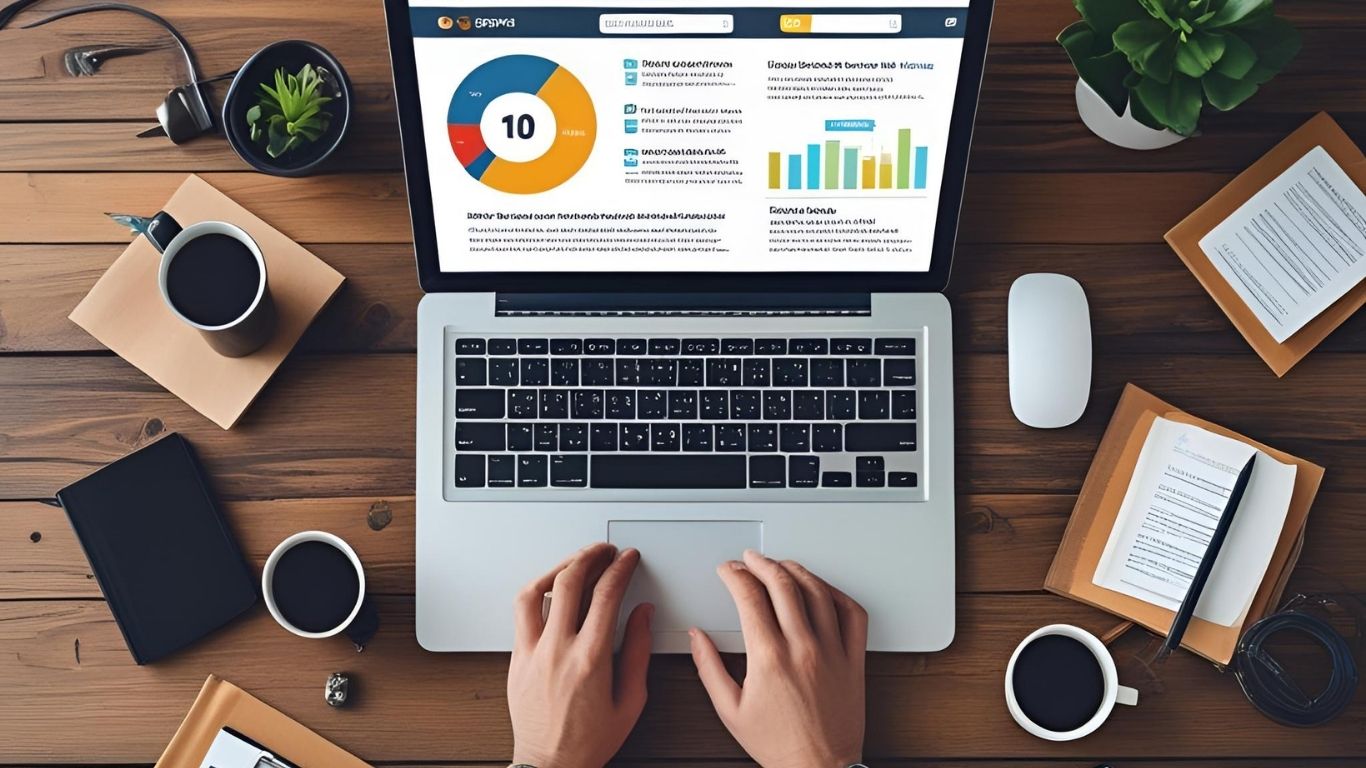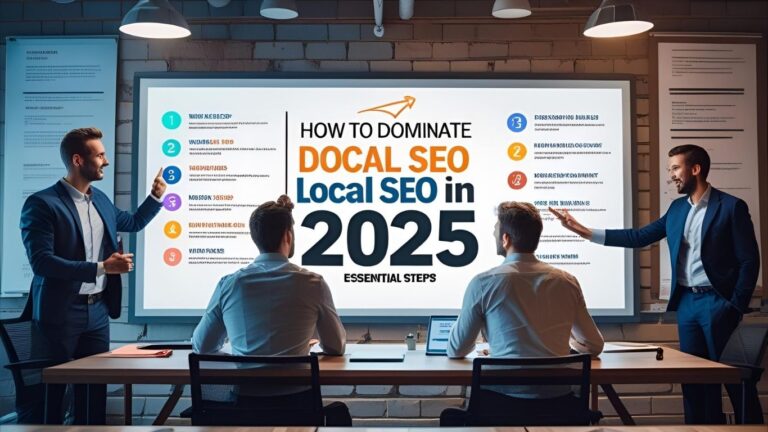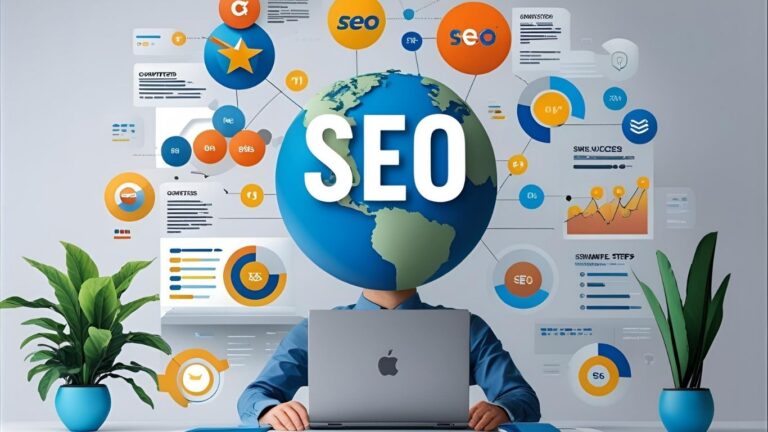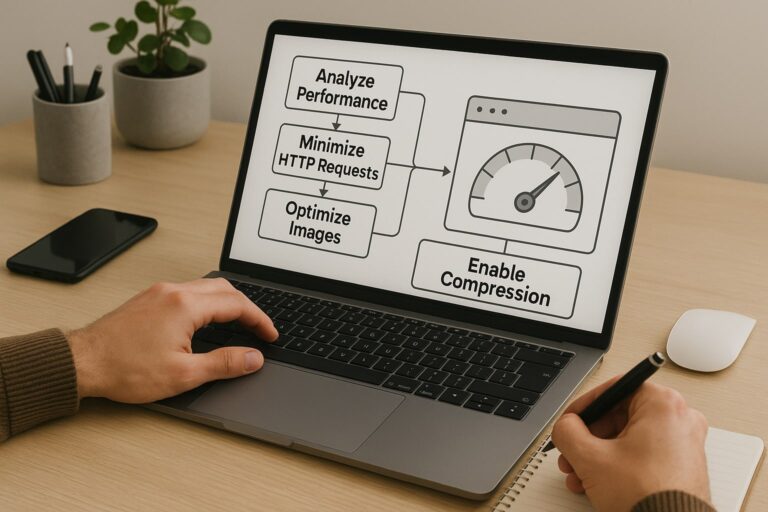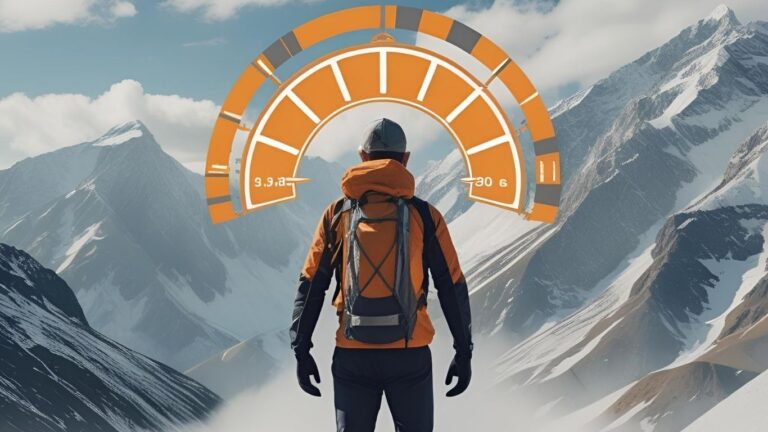On-Page SEO Tips: 10 Steps to Skyrocket Your Google Rankings #SEO #ContentMarketing
On-Page SEO Tips: 10 Steps to Skyrocket Rankings
Why On-Page SEO Matters in 2025
If you’ve ever felt your website deserves more attention than it’s getting, you’re not alone. The truth is, without mastering on-page SEO tips, even great content can get buried in search results. In 2025, search engines are smarter, algorithms are faster, and competition is tougher than ever. That means you can’t rely on outdated tactics or guesswork — you need a structured plan to optimize your site from the inside out.
Think of your website like a brick-and-mortar store. On-page SEO is the way you arrange the shelves, place the signs, and make sure customers find what they’re looking for without wandering out the door. A great layout keeps people engaged — and the same principle applies to search engines.
The Evolving Search Landscape
Google now evaluates far more than just keywords. User engagement, page speed, and mobile friendliness play bigger roles than ever. That’s why this guide isn’t just a checklist — it’s your action plan.
Common Myths About On-Page SEO
“Keyword stuffing works.” (Nope. It gets you penalized.)
“Meta descriptions don’t matter.” (They can make or break clicks.)
“Once optimized, a page stays optimized forever.” (Search evolves. You must too.)
Step 1: Perfect Your Meta Tags
Crafting Compelling Title Tags
Your title tag is like your store’s front window — it’s what makes someone decide to walk in. Every page needs a unique, keyword-rich title that tells both users and search engines exactly what to expect. For example, instead of “Home,” a better choice is “Affordable Handmade Wooden Furniture – Free Delivery.”
If you want to save time, tools like SEMRush and Ahrefs can help you test variations. (Affiliate opportunity: Both offer free trials, so you can experiment without committing.)
Writing Meta Descriptions That Convert
A meta description won’t directly boost rankings, but it can dramatically increase click-through rates. Think of it as your elevator pitch — 155 characters to convince someone your page is worth their time. Include your on-page SEO tips naturally here when relevant, and make it irresistible with action words like “discover,” “learn,” or “boost.”
Step 2: Master Heading Structure
Proper H1–H4 Usage
Search engines scan your headings to understand your content hierarchy. You should have only one H1 per page (usually your article title), followed by H2s for main topics, and H3/H4 for subtopics. This logical flow not only improves SEO but also keeps readers engaged.
Keyword Placement in Headings
Naturally include your target keywords in headings without forcing them. For example, “5 On-Page SEO Tips for Small Businesses” reads far better than “Small Business On-Page SEO Tips Keywords.” Readers appreciate clarity, and search engines reward it.
(Quick tool mention: SurferSEO is great for analyzing competitors’ heading structures — and yes, they offer starter plans.)
Step 3: Optimize Your Content
Writing for Humans and Search Engines
The best content is both readable and optimized. That means short paragraphs, engaging hooks, and information that satisfies intent. Imagine explaining a topic to a friend — keep it simple, yet detailed. Use examples, analogies, and real scenarios.
Maintaining Keyword Density Naturally
Here’s where many go wrong — cramming keywords unnaturally. Instead, aim for smooth inclusion. If your focus keyword is on-page SEO tips, you might say: “One of the most overlooked on-page SEO tips is making sure your content answers the question better than anyone else.”
Step 4: Internal Linking Strategy
Choosing Relevant Anchor Text
Internal links are like the roads between neighborhoods on your site. If those roads are clear, visitors (and Google) navigate easily. Avoid vague anchor text like click here; instead, be descriptive. For example: Read our full guide on beginner-friendly on-page SEO tips.
Affiliate tip: Tools like LinkWhisper automate finding and inserting relevant internal links, making it nearly effortless to maintain SEO flow.
Avoiding Overlinking Pitfalls
Too many links in a short space can feel spammy and hurt readability. A good rule is 2–5 internal links for every 500 words, spread naturally. This balance tells search engines your pages are connected without overwhelming the reader.
Step 5: Image SEO Optimization
Alt Text Best Practices
Alt text serves two purposes: accessibility and SEO. Screen readers use it to describe images to visually impaired visitors, and search engines use it to understand your visuals. Include descriptive phrases and, when relevant, integrate on-page SEO tips into the text without stuffing.
Example: Instead of “image1,” use infographic showing 10 on-page SEO tips for higher rankings.
File Naming for Better Indexing
Before uploading, rename image files from IMG1234.jpg to something descriptive, like on-page-seo-tips-infographic.jpg. Small habit, big payoff.
Affiliate angle: ShortPixel or TinyPNG compress and optimize images before upload, improving both SEO and load speed.
Step 6: Mobile Optimization
Responsive Design Essentials
Over 60% of global traffic comes from mobile devices. If your site doesn’t adjust to different screen sizes, you’re turning away visitors before they even read your first sentence. Use responsive themes or frameworks like Elementor or Divi (affiliate-worthy for WordPress users).
Testing Mobile Performance
Google’s Mobile-Friendly Test is free and straightforward. It highlights issues and offers suggestions. Combine that with tools like BrowserStack to preview your site on different devices before making changes public.
Step 7: Improve Page Speed
Image Compression Tips
Large image files are silent SEO killers. Even one oversized photo can push your load time above Google’s preferred threshold. Compressing images with Imagify or TinyPNG can cut file sizes by 50–80% without noticeable quality loss.
Include your on-page SEO tips in captions or nearby text to keep content relevance strong while improving speed.
Leveraging Caching & CDN
A caching plugin like WP Rocket (highly affiliate-friendly) stores static versions of your pages, so they load faster for repeat visitors. Pair it with a CDN (Content Delivery Network) like Cloudflare to serve content from servers closest to the user.
Step 8: Use Schema Markup
Common Schema Types
Schema markup is like giving Google a cheat sheet about your content. It helps search engines present your pages with rich results — think star ratings, event times, or FAQ dropdowns. Popular schema types include Article, Product, Event, and FAQ.
If you’re sharing on-page SEO tips in list form, the HowTo schema could make your content stand out visually in search results.
Implementing Schema Correctly
Plugins like Rank Math or Yoast SEO Premium can add schema without you touching a single line of code. Just select the type you need, fill in the details, and preview the rich snippet.
Step 9: Content Refresh Strategy
Updating Old Posts
Old content can quietly lose rankings over time. Refreshing it — updating stats, replacing outdated links, and adding new on-page SEO tips — can revive your search visibility without creating something entirely new.
Pro tip: Use Google Search Console to find pages with declining clicks, then re-optimize those first.
Repurposing Content for New Keywords
Sometimes an article has untapped potential. If a post about “SEO basics” gets traction, create a spin-off targeting “SEO for beginners” or “on-page SEO tips for bloggers.” You’ll capture related traffic with minimal extra work.
Step 10: Monitor & Adjust
Tracking Performance Metrics
Use tools like Google Analytics 4 and Ahrefs to monitor traffic, bounce rates, and keyword rankings. Look for trends — if your rankings for on-page SEO tips climb but traffic stays flat, you might need stronger calls to action or better meta descriptions.
Adapting to Algorithm Updates
Google updates its algorithms hundreds of times a year. Staying informed through SEO blogs, newsletters, and communities ensures you can pivot quickly. The faster you adapt, the less likely you are to lose hard-earned rankings.
Final Thoughts on On-Page SEO
Mastering on-page SEO tips isn’t about one-time tweaks — it’s an ongoing process. Each step in this guide works together like gears in a machine, moving your site toward better visibility, higher rankings, and ultimately, more conversions.
Whether you’re updating meta tags, improving mobile speed, or refreshing old posts, consistency is key. Make optimization part of your regular website maintenance, and you’ll see compounding results over time.
Your website is more than a collection of pages — it’s your brand’s digital heartbeat. Treat it with care, keep it in top condition, and it will reward you with steady traffic, loyal readers, and growing authority.
🔹 Bullet-Point Summary (10 key points)
- On-page SEO is the foundation for improving search engine rankings.
- Craft compelling, keyword-rich meta titles and descriptions.
- Structure content with H1–H4 headings for readability and SEO clarity.
- Use optimized internal linking to guide readers and boost authority.
- Optimize imag es with descriptive file names, alt text, and compression.
- Ensure mobile responsiveness for better user experience and rankings.
- Improve page speed using caching, CDNs, and lightweight themes.
- Implement schema markup for rich, eye-catching SERP results.
- Refresh older content regularly to maintain and improve rankings.
- Track performance metrics and adapt to Google algorithm updates.
❓ Frequently Asked Questions on On-Page SEO Tips
1. What are on-page SEO tips?
On-page SEO tips are actionable strategies applied directly to your web pages — such as optimizing headings, images, and internal links — to improve search engine rankings and user experience.
2. Why is on-page SEO important?
It’s crucial because it tells search engines exactly what your page is about while improving readability and engagement for visitors.
3. How often should I update my on-page SEO?
Ideally, review your pages every 3–6 months, as fresh, updated content signals quality and relevance to Google.
4. What tools help with on-page SEO?
Tools like Yoast SEO, Rank Math, and Ahrefs can guide keyword placement, readability, and structural optimization.
5. Do images affect on-page SEO?
Absolutely. Optimized images improve load time, accessibility, and keyword relevance when using proper file names and alt text.
6. Can internal links improve SEO?
Yes. They guide users deeper into your site, distribute authority, and help search engines understand your structure.
7. Should I use keywords in headings?
Definitely. Including your primary keyword in at least one H2 or H3 strengthens topical relevance.
8. How does page speed impact SEO?
Slow-loading pages frustrate users and lower rankings, so compression, caching, and CDNs are vital.
9. Is mobile optimization part of on-page SEO?
Yes, because Google uses mobile-first indexing, making responsive design essential for ranking well.
10. Can schema markup improve clicks?
It can, since rich snippets stand out in search results and often boost CTR.
11. How many headings should a blog post have?
Aim for at least 15–20 headings and subheadings in a 3,500-word post for scannability and SEO balance.
12. Are meta descriptions still relevant?
Yes. While they don’t directly impact rankings, they greatly influence click-through rates from search results.
13. Should I use affiliate links in SEO content?
Yes, but integrate them naturally, ensuring they add value rather than distract from the main content.
14. What’s the ideal keyword density for on-page SEO tips?
Around 1–1.2%, placed naturally in headings, paragraphs, and image alt text.
15. Can I learn more about SEO strategies?
Yes — check the full SEO blog at GetRizwan Blog for more advanced tutorials.
Explore These Valuable Resources
To truly master on-page SEO tips and stay ahead in the ever-evolving digital landscape, it’s essential to tap into authoritative sources. These resources not only deepen your understanding but also provide practical tools and updates that can transform your SEO strategy.
Moz Beginner’s Guide to SEO — A comprehensive starting point that breaks down SEO fundamentals in clear, digestible language. Visit: https://moz.com/beginners-guide-to-seo
Google Search Central Blog — Stay updated directly from the source about algorithm changes, best practices, and webmaster tips. Explore: https://developers.google.com/search/blog
Ahrefs Blog — Packed with actionable SEO tutorials and case studies, Ahrefs is invaluable for both beginners and pros. Check out: https://ahrefs.com/blog/
Search Engine Journal — Offers daily news, expert analysis, and practical advice on SEO trends and digital marketing. Learn more at: https://www.searchenginejournal.com/
Neil Patel’s SEO Guide — Known for clear, strategic insights on content marketing and SEO optimization. Read here: https://neilpatel.com/what-is-seo/
Yoast SEO Blog — Focuses on SEO best practices with an emphasis on WordPress optimization. Visit: https://yoast.com/seo-blog/
Backlinko’s Definitive SEO Guide — Brian Dean’s in-depth resource on advanced SEO strategies is a must-read. Explore: https://backlinko.com/seo-this-year
Google PageSpeed Insights — Test your website speed and get actionable improvement tips. Access here: https://developers.google.com/speed/pagespeed/insights/
Schema.org — Understand and implement structured data to enhance your search listings. Learn more at: https://schema.org/
HubSpot SEO Resources — Offers free courses, tools, and articles on SEO fundamentals and inbound marketing. Visit: https://blog.hubspot.com/marketing/seo
By exploring these valuable resources, you’ll not only deepen your SEO knowledge but also gain practical tools and insights that can help your site climb search rankings more effectively. Furthermore, staying informed through these channels ensures you adapt quickly to industry changes, keeping your strategies fresh and competitive.
🔗 Resource & Engagement Paragraphs
If you’re ready to put these strategies into action, explore the Services page to see exactly how tailored SEO plans can boost your rankings. You’ll find packages designed to fit different business sizes, so you can scale without overextending your budget.
For proof of results, browse the Portfolio — it’s packed with real-world projects showing how effective optimization and smart content strategies can transform online performance.
If you’re looking for tools or templates to jumpstart your journey, visit the Shop where carefully selected digital products make optimization easier than ever.
And of course, let’s connect personally — follow and message on LinkedIn to share your challenges, ask questions, or explore collaborations.
Finally, for ongoing insights and deeper dives, bookmark the Blog where fresh articles expand on every concept covered here.

